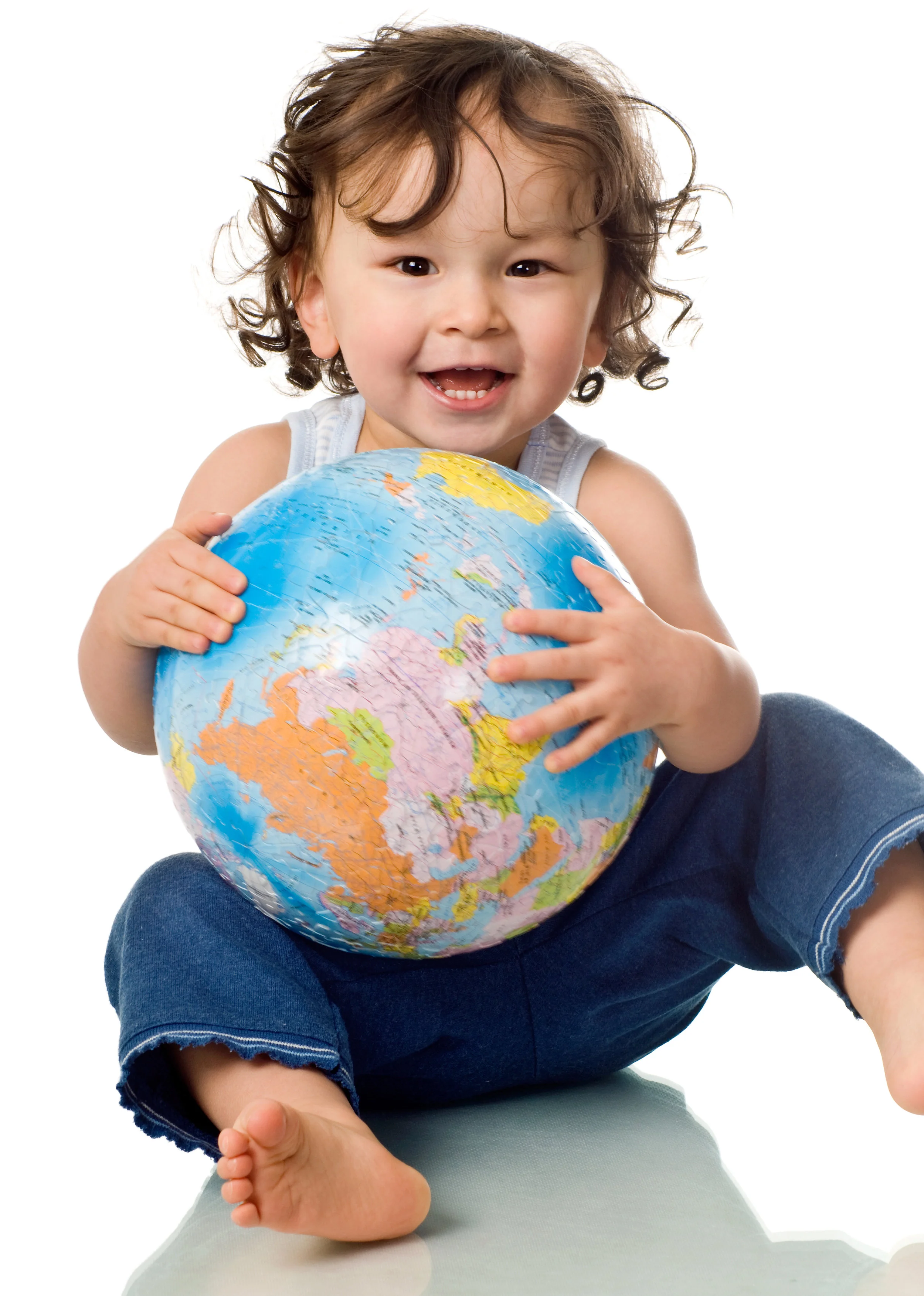"I am a citizen, not of Athens, or Greece, but of the world." — Socrates
As parents, it's our goal to raise children who feel a deep connection to their community — both locally and globally. By raising kids as global citizens, we're not only exposing them to fascinating world cultures, we're also teaching them to be kinder, more compassionate, and more inclusive individuals. Because that's what global citizenship is all about, isn't it? Embracing our part in communities and the wider world while working cooperatively to make this planet a better place for all.
While these goals may seem lofty, they're certainly achievable — especially for children. In fact, you can easily nurture your kids' natural tendencies towards morality and empathy in a few simple and achievable ways.
What Makes Someone a Global Citizen? And Why Does it Matter?
You don't necessarily have to travel the world to be a global citizen. Rather, a global citizen is someone who recognizes that there are no boundaries to our shared humanity, and that human rights and civic responsibilities transcend our individual cultures, communities, and countries. Global citizens tend to stand behind common goals that benefit everyone, like greater ecological sustainability, human rights, and the end of world poverty.
Obviously, there are many benefits to raising children who think like global citizens. Firstly, kids raised like this will find it easier to be more open and inclusive in social situations. They'll understand that other members of the human community are just like them, which will deepen their empathy and compassion. And when you teach your kids about other cultures and ways of life, you'll help foster in them a lifelong love of learning, education, and curiosity.
Finally, it's more important than ever to prepare kids for a future in which they're comfortable interacting with people of different backgrounds. This sets them up for a lifetime of good citizenship, and even prepares them to pursue careers and educational opportunities in pursuit of the greater good.
5 Ways to Raise Your Kids as Global Citizens
Every family is different, but some of these tips might help your kid on their path to becoming a global citizen:
1. Teach the Core Values: Empathy & Curiosity
Global citizenship requires a person to look outside themselves and their own limited community in order to extend their energy and compassion outwards to others. This requires a healthy knowledge about other peoples and ways of life, which is something your child will naturally want to explore if you encourage them to remain open and curious.
Sometimes children ask questions about other people that they perceive to look or act different from themselves. Instead of shutting these questions down, work with your kid's curiosity by taking the time to explain people's differences — and underlying similarities.
Most importantly, encourage your children to think and act with empathy. Validate your child's emotions ("I see you are feeling frustrated/sad/excited") so that they can identify feelings in themselves. By teaching them the value of their own feelings and emotions, you're setting them up for the next step — extending that compassion and understanding to others.
2. Read Books on Global Citizenry
You don't have to go that far to teach your kids about different cultures around the world. In fact, incorporating children's books that celebrate other ways of life is an easy, inexpensive way to expand their horizons. Here are just a few to get started:
What is Your Language? by Debra Leventhal. Geared for pre-K to second grade children, Leventhal's delightful children's book celebrates music, language, and communities the world over.
What Can a Citizen Do? by Dave Eggers. It's so important to teach your young global citizen about what citizenship actually means, and Dave Eggers' book seeks to do exactly that.
Babies Around the World by Puck. Looking for something for babies and toddlers? Babies Around the World is a simple and colorful celebration of the world's babies, suitable for little ones.
While books that teach children about diversity as a whole are great, it's also important to find children's books that celebrate specific cultures. If your child is bilingual or learning another language, consider foreign language versions of treasured classics.
3. Teach Your Child A Foreign Language
"Language is the road map of a culture. It tells you where it’s people come from and where they are going." ‒Rita Mae Brown
Learning a second language can support your children's development in so many ways: it helps keep their brains active and sharp, boosts memory, and improves listening skills.
When it comes to supporting young global citizens, learning a second language can also create a powerful connection to another culture. Understanding a foreign language helps foster a deeper connection to another culture's art, music, literature, and lifestyle. And when you can communicate with another person in their native tongue, you improve social connections and enrich relationships with others.
In addition, learning a foreign language sets your children up for future educational opportunity, internships, jobs, or initiatives that involve speaking a different language. If they want to make a global difference as adult citizens, a bilingual background will help them reach their goals.
4. Set Goals to Travel as Often as Possible
Of course, almost nothing can beat travel as a way to support your children on their way to becoming global citizens. Not only is travel a fun and enriching experience for the entire family, it offers children a way to immerse themselves in another culture. Make sure you get creative while traveling:
Visit playgrounds and parks so your child can play with other children
Go to museums and events that highlight culture
Engage openly and respectfully with the people that you meet, encouraging your kids to do the same
Enjoy local cuisine, art, and music
More than anything, it's important to bring your curiosity with you when you travel. Encourage your children to remain open to learning about a culture from the individuals who live in that culture daily. Often, the most important traveling experiences won't take place in a museum — they'll happen in a local marketplace or on line at a cafe.
5. Explore Your Community: Art, Music, and Volunteerism
If international travel isn't necessarily in your budget — or you simply want to take advantage of opportunities close to your home, then you might find that your community is a surprisingly rich place to teach your kids about the world at large. To get started:
Check with your local library to see if they have any upcoming classes, workshops, or events celebrating diversity or world culture
Scan your local news outlets for any parades or events that highlight a particular culture in your area
Many universities have multicultural events and resources; check out the schedule of events at your nearest institute of higher education
Keep an eye out for the arts: any upcoming international musical festivals or art exhibits upcoming in your area?
Celebrate the World Day for Cultural Diversity every May 21st with your family
Volunteer. Celebrating art, music, and dance is an incredible way to connect with your larger community. However, one of the best ways to explore your community while strengthening the key values of global citizenry is to volunteer with your children. Even elementary-age children are mature enough to visit a local nursing home, clean up your local community, or participate in a food drive. Volunteering helps them understand how their individual actions can make a difference in the world at large — and helps them see the value in global citizenry.
Get Started Today
Children have a unique and incredible ability to absorb new information, develop their neural pathways, and strengthen their compassion and empathy. By exposing your children to other cultures, teaching them to learn a new language, and celebrating multiculturalism in your community — you can help raise your child as a true global citizen.






